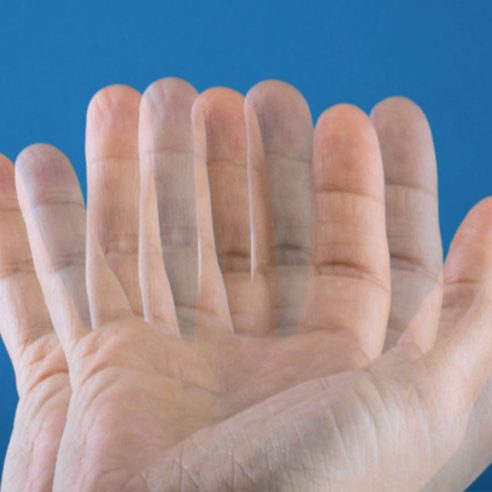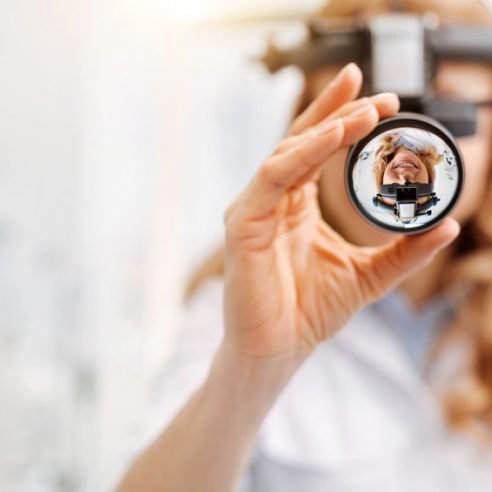
Epiphora (watering eyes)
Epiphora is an ophthalmological disorder manifested by excessive tearing of the eyes. Most of the time, it is not severe and disappears on its own. However, if you are experiencing this and the problem persists, we recommend that you make an appointment for an ophthalmological examination. Treatment can be different, depending on the cause of the epiphora.
What is epiphora?
Epiphora is also known as ” hyperlacrimation” or “excessive tearing”.
Tears play an essential role in maintaining eye health:
- Keep the cornea hydrated and leads to clear vision;
- Remove impurities that can irritate the surface of the eyeball and maintains eye hygiene.
Epiphora occurs when the tear film in the eye is not adequately removed by the nasolacrimal system. Thus, tears no longer leak into the eyes, but out of them.
Characteristics:
- Epiphora can occur at any age, but is more common in babies, children under 12 months and older people over 60;
- It can affect one or both eyes;
- It can be congenital (from birth) or acquired;
- Congenital epiphora usually occurs in newborns, but disappears after a few weeks as soon as the baby develops nasolacrimal ducts.
- Acquired epiphora is temporary and disappears once its cause is removed.
What are the symptoms of epiphora?
Symptoms of epiphora differ depending on the underlying causes. The most common signs of epiphora are:
- Excessive wetness in the eyes;
- Sensation of foreign object;
- Redness;
- Swollen eyelids;
- Stinging and discomfort;
- Acute eye pain;
- Blurred vision;
- Visible dilation of blood vessels in the eyes;
- Palpebral edema;
- Increased sensitivity to light;
- Purulent secretions.
Symptoms accompanying excessive tearing can help narrow down the differential diagnosis, helping to identify the underlying cause. For example:
- Nasal pain suggests dacryocystitis.
- Foreign object sensation may indicate the presence of a corneal foreign object, dry eye syndrome, excoriation, corneal ulcer or trichiasis.
- Sensitivity to light can be a symptom of uveitis or keratitis.
- Itching suggests an allergic cause.
- Discharge and inflammation may be caused by obstruction of the nasolacrimal ducts and may signal conjunctivitis.
What causes watering eyes?
Hyperlacrimation can occur for several reasons. Usually it’s external factors (dust, wind, cold, excessive use of blue screens), but there are also medical causes (infections or eye injuries).
- Presence of a foreign object. Dust, contact lenses that have not been properly cleaned and any other foreign object can cause eye irritation and injury. These automatically trigger excessive tearing, whereby the body cleans the eye, wanting to protect and remove the foreign object.
- Nasolacrimal ducts obstruction. Nasolacrimal ducts prevent excessive tear accumulation in the eye. When they are blocked, they can no longer do their job and so epiphora occurs.
- Infection or inflammation of the eye
- Infections of the lacrimal glands;
- Ingrown eyelashes;
- Stye (hordeolum);
- Chalazion;
- Blepharitis;
- Trachoma;
- Conjunctivitis;
- Keratitis;
- Sarcoidosis;
- Wegener’s granulomatosis;
- Dacryocystitis;
- Congenital glaucoma (in newborns);
- Sinus infections.
- Eyelid modifications – Blinking is meant to maintain an even clearing of tears from the eyes, and any changes in the structure and function of the eyelids can lead to excessive tearing.
- Surgical procedures on the face
- Cataract surgery;
- Postoperative fractures of the nasal or facial bones.
- Cataract surgery;
- Allergies (hay fever, allergic rhinitis; allergies to pollen, dust, animal hair). The immune system triggers an inflammatory response, causing red, swollen eyes and excessive tearing.
- Prolonged exposure to adverse weather conditions (sun, wind, cold). These factors can cause increased sensitivity to light and hence hyperlacrimation.
- Excessive exposure to blue light (tablet, laptop, phone, etc.) without wearing computer glasses.
- Certain substances and medicines (topical blood pressure medicines, some medicines used in chemotherapy, epinephrine and certain eye drops).
How is epiphora diagnosed?
An ophthalmological examination is necessary to obtain a correct diagnosis of epiphora.
- In the first phase, the discussion with the specialist takes place. Here, the patient presents symptoms and personal and family medical history.
- The doctor then tests visual acuity using a remote light panel and a nearby chart.
- Specific ophthalmological investigations follow:
- Schirmer test to quantify tear production
- Physical examination of the eyes and eyelids to identify signs of possible causes of epiphora, such as the presence of a foreign object, sinus pain, swelling or tumor formations in the medial palpebral ligament and other eyelid abnormalities.
- Probe and irrigate the lacrimal drainage system with saline solution. Signs of reflux or nasal drainage may indicate nasolacrimal ducts obstruction.
- Use high-performance equipment to determine ocular parameters.
- Imaging tests and procedures (dacryocystography, CT, nasal endoscopy) may also be performed when surgery is being considered, or to detect abscesses in case of infection.
How is excessive tearing treated?
Ophthalmological treatment for watering eyes depends on the underlying cause and how severe the problem is.
- In the case of foreign objects, removing them from the eye is the first step in treating the epiphora.
- Eye drops can be used to clear the eyes or to relieve dry eye sensation, even if there is a foreign object in the eye.
- In the case of epiphora caused by seasonal allergies, it is recommended to avoid known allergens and to take anti-allergy medication.
- For nasolacrimal ducts obstruction, there is the therapeutic option of nasolacrimal ducts irrigation. In more severe cases, a surgical procedure called dacryocystorhinostomy is used. This creates a passage between the lacrimal sac and the nasal cavity.
- For hyperlacrimation caused by changes in the eyelids, entropion and ectropion, ophthalmic surgery is recommended.
- Epiphora in newborns usually heals by itself. If there are blocked nasolacrimal ducts, they gradually open in the first months of life. It may help to clean the eyes with a sterile wet compress.
- Viral infections usually heal by themselves.
- Bacterial infections would require eye drops or ointments with antibiotics.
Dr. Holhoș clinics are renowned for top specialists and state-of-the-art ophthalmic technology. Schedule an examination in Cluj-Napoca, Turda, Alba-Iulia, Sibiu or Mediaș.






























